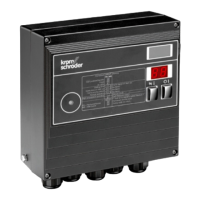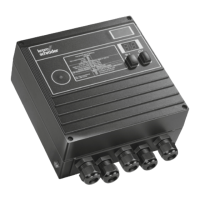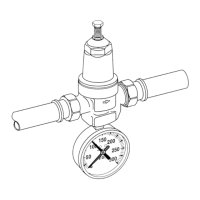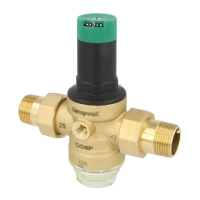BCU 460, BCU 465 · Edition 11.19 137
Safety information in accordance with EN61508-2
20 Safety information in accordance with
EN61508-2
20.1 General
Scope of application
As set out in “Industrial thermoprocessing equipment–
Part 2: Safety requirements for combustion and fuel
handling systems” (EN746-2) when used with fuels
and oxidants.
The BCU4 is suitable for continuous operation (pursu-
ant to EN298:2012-12, Section 3.126) and for inter-
mittent operation (pursuant to EN298:2012-11, Sec-
tion 3.127).
Type of action
The automatic action corresponds to Type2 pursuant
toEN 60730-1.
Behaviour under fault conditions
Switching off the safety-relevant output signals:
The output signals are switched off electronically in
accordance with the criteria of automatic action type
B.V.AC.AD.AF.AG.AH (pursuant to EN 60730-2-5:2015,
Section 6.4.3.).
Maximum reaction time in the event of a flame failure:
This corresponds to the safety time during operation
and can be parameterized to between 1and4s.
Software class:
Corresponds to software classC which operates in a
similar double-channel architecture with comparison.
20.2 Interfaces
Electrical wiring
Type of wiring:
Attachment type X to EN 60730-1.
Grounding: via PE wire connection.
Internal voltages are neither SELV nor PELV. Floating
contacts meet the requirements for SELV.
20.3 Communication
Safety over EtherCAT® technology (FSoE, FailSafe over
EtherCAT) is used for K-SafetyLink communication.
Safety over EtherCAT® is a registered trademark and
patented technology licensed by Beckhoff Automation
GmbH, Germany.
The K-SafetyLink technology complies with SIL3 in ac-
cordance with EN61508 and is standardized pursuant
to IEC61784-3-12 and ETG5100.
Safety over EtherCAT® uses the fail-safe principle which
means that a safe state is restored in the case of an
inactive signal. In the case of communication errors, all
signals are interpreted as inactive.
Safety-relevant data are transmitted on the basis of the
black channel principle.

